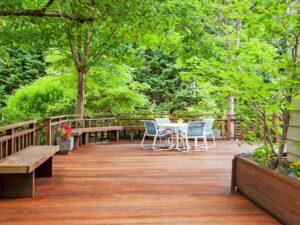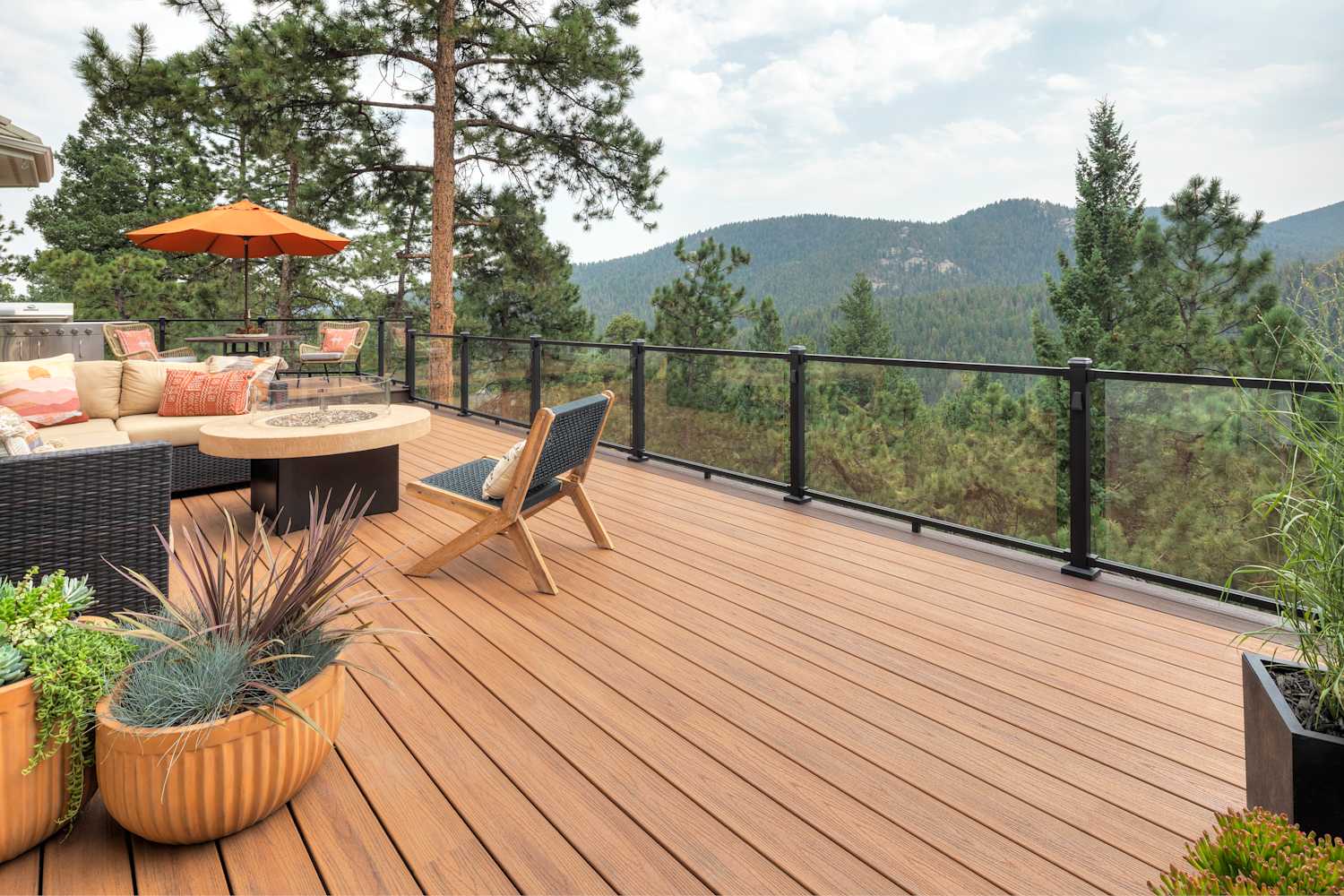In today’s world, sustainability is becoming an increasingly important factor when it comes to home improvements and construction projects. One of the most common additions to homes is the deck, a place for relaxing, entertaining, or simply enjoying the outdoors. However, many traditional decking materials contribute to environmental degradation through deforestation, chemical treatments, and the overall energy-intensive manufacturing process. This is where eco-friendly decks come into play. By choosing sustainable materials and designs, homeowners can create beautiful outdoor spaces that are not only functional but also environmentally responsible.
The Growing Demand for Eco-Friendly Decks
 As awareness of environmental issues increases, more homeowners are turning to eco-friendly decking materials and designs to reduce their carbon footprint. The demand for sustainable products extends beyond just decking boards to include the entire structure, such as framing materials, fasteners, and finishing products. Homeowners are now prioritizing materials that are renewable, recyclable, and non-toxic, understanding that even small changes to their outdoor living spaces can contribute to a larger environmental impact.
As awareness of environmental issues increases, more homeowners are turning to eco-friendly decking materials and designs to reduce their carbon footprint. The demand for sustainable products extends beyond just decking boards to include the entire structure, such as framing materials, fasteners, and finishing products. Homeowners are now prioritizing materials that are renewable, recyclable, and non-toxic, understanding that even small changes to their outdoor living spaces can contribute to a larger environmental impact.
Sustainable Decking Materials
When it comes to building an eco-friendly deck, selecting the right materials is crucial. Fortunately, there are several sustainable decking options available that provide long-lasting performance without compromising the environment.
Composite Decking: A Blend of Sustainability and Durability
Composite decking has become one of the most popular choices for eco-conscious homeowners. Made from a combination of recycled wood fibers and plastic, composite decking offers the perfect balance of sustainability and durability. The recycled content in composite decking helps divert waste from landfills while also reducing the need for virgin materials. Furthermore, composite decks require minimal maintenance, reducing the need for toxic preservatives or stains.
Pressure-Treated Wood: A Renewable Option
Pressure-treated wood has long been a popular decking material due to its affordability and durability. However, traditional pressure-treated lumber is often chemically treated with toxic substances that can harm the environment. Today, many manufacturers offer pressure-treated wood that is certified by the Forest Stewardship Council (FSC), ensuring it comes from responsibly managed forests. Choosing FSC-certified pressure-treated wood helps ensure that the decking material is renewable and ethically sourced.
Bamboo Decking: A Fast-Growing, Renewable Material
Bamboo is another sustainable option for decking. Known for its rapid growth, bamboo is a highly renewable resource, making it an excellent choice for eco-friendly decks. Bamboo is naturally strong and resistant to moisture, which makes it an ideal material for outdoor applications. When harvested responsibly, bamboo can be used as a durable decking material that does not contribute to deforestation, unlike traditional hardwoods.
Reclaimed Wood: Giving Old Materials a New Life
Reclaimed wood is one of the most sustainable options available for decking. By repurposing wood from old buildings, barns, or industrial structures, homeowners can contribute to reducing the demand for new lumber while preserving the character of historical materials. Reclaimed wood often comes with unique textures and finishes, making it an aesthetically pleasing choice for creating a one-of-a-kind deck.
Eco-Friendly Decking Designs
While materials play a vital role in making a deck eco-friendly, the design of the deck itself can also contribute to sustainability. By adopting certain design principles, homeowners can further minimize the environmental impact of their outdoor spaces.
Maximizing Natural Light and Ventilation
One of the simplest ways to make an eco-friendly deck is to ensure it takes full advantage of natural light and airflow. A well-designed deck that is positioned to capture the sun’s warmth during the colder months can reduce the need for artificial heating, leading to lower energy consumption. Additionally, maximizing airflow through thoughtful placement of railings and posts can reduce the need for energy-intensive fans or air conditioning in hot weather.
Incorporating Greenery and Plantings
Integrating greenery into the deck design not only enhances the aesthetic appeal but also helps to cool the surrounding area, reducing the need for air conditioning. By including planters or even creating living walls on or around the deck, homeowners can create a natural ecosystem that benefits both the environment and the well-being of those using the space.

Water Management and Rainwater Harvesting
An eco-friendly deck should also incorporate water management systems that help conserve water and prevent erosion. Rainwater harvesting systems, such as rain barrels or permeable decking materials, allow homeowners to collect and reuse rainwater for irrigation, reducing their reliance on municipal water supplies. Additionally, decks that allow water to drain naturally into the ground rather than running off into storm drains contribute to better water management and less environmental strain.
Green Roofing for Decks
Incorporating a green roof onto a deck is a growing trend in sustainable outdoor design. A green roof involves planting vegetation directly onto the surface of a roof, including decks with overhead structures. Not only do green roofs reduce the urban heat island effect, but they also provide excellent insulation, lower energy costs, and promote biodiversity. With a green roof, the deck becomes more than just an outdoor living space – it becomes a living, breathing part of the ecosystem.